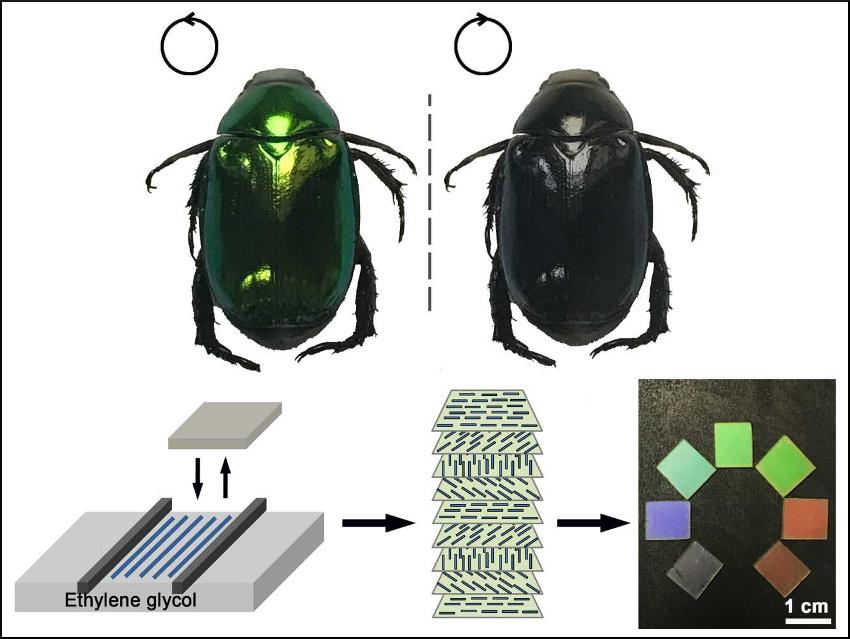The hierarchical organization of simple inorganic or organic building blocks can produce remarkable mechanical and optical properties in biological materials. For example, the iridescent exoskeleton of scarab beetles is composed of plate-like layers oriented in different directions. Such examples from the natural world inspire the design of artificial materials with similar properties.
Zhiyong Tang and colleagues, National Center for Nanoscience and Technology, Chinese Academy of Sciences, Beijing, have developed a method for synthesis of biomimetic chiral photonic crystals. The researchers replicated the intricate helical structure and circularly polarized color reflection of the cuticle of beetles. For this, they used a layer-by-layer Langmuir–Schaefer assembly of colloidal NiMoO4·x H2O nanowires (less than 2 nm in diameter). The nanowires were then compressed between two bars to create a film. Up to 1000 nanowire films were layered on top of one another at predetermined angles to achieve the desired optical characteristics.
According to the researchers, the material offers the highest chiroptical activity among known chiral inorganic nanostructures, with a dissymmetry factor (a value that describes the strength of circular dichroism) of –1.6. The material could be useful for optical security systems because control of the circular dichroism response generates color variance with a high capacity and fidelity.
- Biomimetic Chiral Photonic Crystals,
Jiawei Lv, Defang Ding, Xuekang Yang, Ke Hou, Xiang Miao, Dawei Wang, Baichuan Kou, Ling Huang, Zhiyong Tang,
Angew. Chem. Int. Ed. 2019, 58, 7783–7787.
https://doi.org/10.1002/anie.201903264



